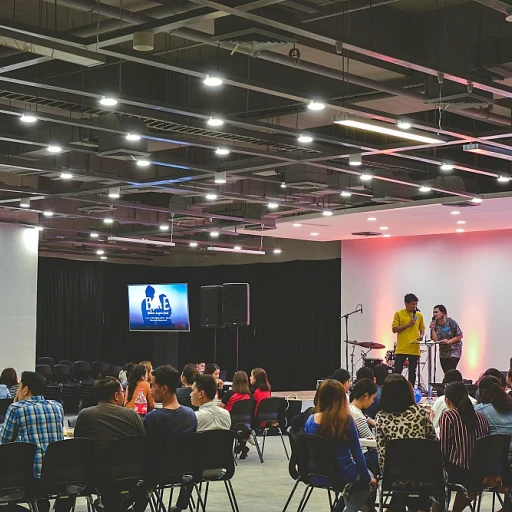The Importance of Standardizing Interviews
Establishing Consistent Guidelines for Interview Processes
Maintaining uniformity in interview practices is vital for effective recruitment. By standardizing interviews, organizations set the foundation for an impartial hiring process that can effectively assess candidates. Structured interviews, which are built on set questions related to job requirements, significantly improve how candidates are evaluated. A standardized approach helps minimize unconscious bias that can creep into unstructured interviews. By training interviewers to focus on pre-determined interview questions, the hiring team ensures each candidate receives a fair chance regardless of their background. Such practices lead to more reliable hiring decisions. Recruitment teams that adopt standardized interview practices also experience an improvement in candidate experience. Applicants are better able to express their potential when they know what is expected of them during interviews. This can ultimately attract the best talent to your organization. Learning from complex industries, where consistency is a key to success, can be invaluable in refining your recruitment process. While challenges in implementation exist, the overall benefits make a strong case for standardizing interviews.Key Elements of a Standardized Interview Process
Core Components of a Structured Interview Approach
A structured interview process serves as the backbone of any robust recruitment strategy, offering a cohesive framework for evaluating candidates efficiently and fairly. It involves setting predefined, consistent questions and ensuring a systematic evaluation of each candidate based on job requirements. Here are some key elements to implement:- Consistent Interview Format: Define a clear format for interviews to ensure each candidate has an equal opportunity to present their skills. This includes deciding on the sequence of questions and the time allocated for each section.
- Pre-set Questions: Develop a comprehensive list of interview questions aligned with the job's core competencies and requirements. This eliminates the variability and bias associated with unstructured interviews, providing a consistent basis for evaluation.
- Evaluating Candidate Experience: It’s crucial for hiring teams to assess how each candidate's past experiences relate to the role they are applying for. This can be achieved through behavioral questions that draw on previous experiences to demonstrate suitability for the job.
- Bias Reduction: Implementing a standardized process helps in reducing unconscious bias. Structured interviews focus on skills, experiences, and other job-relevant criteria, which leads to more equitable hiring decisions.
- Interviewers’ Training: Proper training of interviewers ensures that they adhere strictly to the structured process and adequately assess every candidate against the same set standards. This can be further strengthened by periodic reviews and feedback sessions.
- Assessment Scales: Use a uniform scoring system to evaluate responses. This improves the objectivity of the hiring process, as interviewers can tabulate results based on defined criteria rather than subjective impressions.
Benefits of Consistent Interview Practices
Advantages of Consistency in Interview Practices
Implementing a consistent interview process is crucial for enhancing the overall recruitment process. By standardizing interviews, organizations can achieve several key benefits that significantly impact the hiring process.
- Reduced Bias: One of the primary advantages of structured interviews is the reduction of unconscious bias. When interviewers follow a set of predefined questions, it minimizes the influence of personal biases and ensures that all candidates are evaluated on the same criteria.
- Improved Fairness: A standardized interview process ensures that every candidate is given an equal opportunity to showcase their skills and experience. This fairness can enhance the candidate experience, making the organization more attractive to top talent.
- Enhanced Decision-Making: Consistent interview practices provide hiring managers with a clear framework for comparing candidates. This leads to more informed hiring decisions, as interviewers can objectively assess how each candidate meets the job requirements.
- Time Efficiency: A structured interview format saves time for both the interviewers and the candidates. By having a clear structure, the interview process becomes more streamlined, reducing the time spent on each interview and allowing the recruitment team to focus on other critical tasks.
- Better Candidate Experience: Candidates appreciate a well-organized interview process. When interviews are conducted consistently, it reflects positively on the organization, improving the overall candidate experience and increasing the likelihood of attracting the best applicants.
While the benefits of standardized interviews are clear, implementing them can present challenges. However, with the right tools and technologies, organizations can overcome these hurdles and create a more effective recruitment process. To explore the complexities of candidate sourcing further, you can visit navigating the complexities of candidate sourcing.
Challenges in Implementing Standardized Interviews
Overcoming Obstacles in Achieving Consistency
Implementing standardized interviews across a recruitment framework is fraught with challenges. The allure of structured interviews lies in their ability to consistently evaluate candidates, yet the journey to achieving this standardization is often riddled with obstacles. One significant challenge is the ingrained preference for unstructured interviews among some hiring managers. Many recruiters and hiring teams resist change, emphasizing the freedom associated with unstructured interviews. This preference often stems from a belief that spontaneous questions enhance the candidate experience and allow interviewers to probe deeper into an individual's personality and responses. Another notable challenge is the presence of unconscious bias. While structured interviews provide a consistent set of questions, interviewers may still project personal biases into the interpretation of candidates’ responses. Continuous training on recognizing and mitigating these biases is vital to safeguard the integrity of the hiring process. Ensuring adherence to a newly implemented interview format poses logistical and operational challenges. Recruitment teams must enforce the standardized process, which can be time-consuming and technically demanding, especially without the right tools or technologies. Training professionals and having robust systems in place can greatly aid in overcoming this hurdle. Lastly, the pressure to fill positions swiftly may tempt recruiters to revert to familiar, yet inconsistent, interviewing practices. This tension between hiring quickly and maintaining process fidelity calls for strong policy leadership and a commitment to best practices on behalf of the organization's recruitment strategy. Ultimately, while the path to standardized interviews involves tackling these challenges head-on, the benefits, including enhanced fairness and improved candidate selection, underscore its value in the hiring decisions. The effort to align all involved so that recruitment remains both equitable and effective is undoubtedly worth the investment.Tools and Technologies for Standardizing Interviews
Leveraging Technology to Streamline Interviews
In today's digital age, technology plays a pivotal role in enhancing the recruitment process, especially when it comes to standardizing interviews. Implementing structured interviews requires the right tools and technologies to ensure consistency and efficiency across the board.
Interview Management Software
Interview management software can significantly streamline the hiring process by offering a centralized platform for scheduling, conducting, and evaluating interviews. These tools often come with features that allow hiring managers to set questions and criteria for evaluating candidates, ensuring that every applicant is assessed against the same standards. This reduces the risk of bias and improves the overall candidate experience.
Video Interview Platforms
Video interview platforms have become increasingly popular, providing a flexible and accessible way to conduct interviews. These platforms can support both live and recorded interviews, allowing interviewers to review candidate responses at their convenience. This not only saves time but also ensures that all candidates are given equal consideration, as their responses can be compared side-by-side.
AI-Powered Tools
Artificial intelligence is making strides in the recruitment process by offering tools that help reduce unconscious bias and improve hiring decisions. AI can assist in analyzing interview responses, providing insights into a candidate's suitability for the job based on predefined criteria. This technology can also help in identifying patterns and trends in candidate data, aiding recruitment teams in making more informed decisions.
Training and Development Platforms
To effectively implement standardized interviews, it is crucial that hiring teams are well-trained in best practices. Training platforms can offer courses and resources on conducting structured interviews, understanding job requirements, and mitigating bias. This ensures that all interviewers are equipped with the knowledge and skills necessary to carry out the process effectively.
By leveraging these tools and technologies, organizations can enhance their recruitment process, ensuring that they attract the best talent while maintaining fairness and consistency in their interviews.












